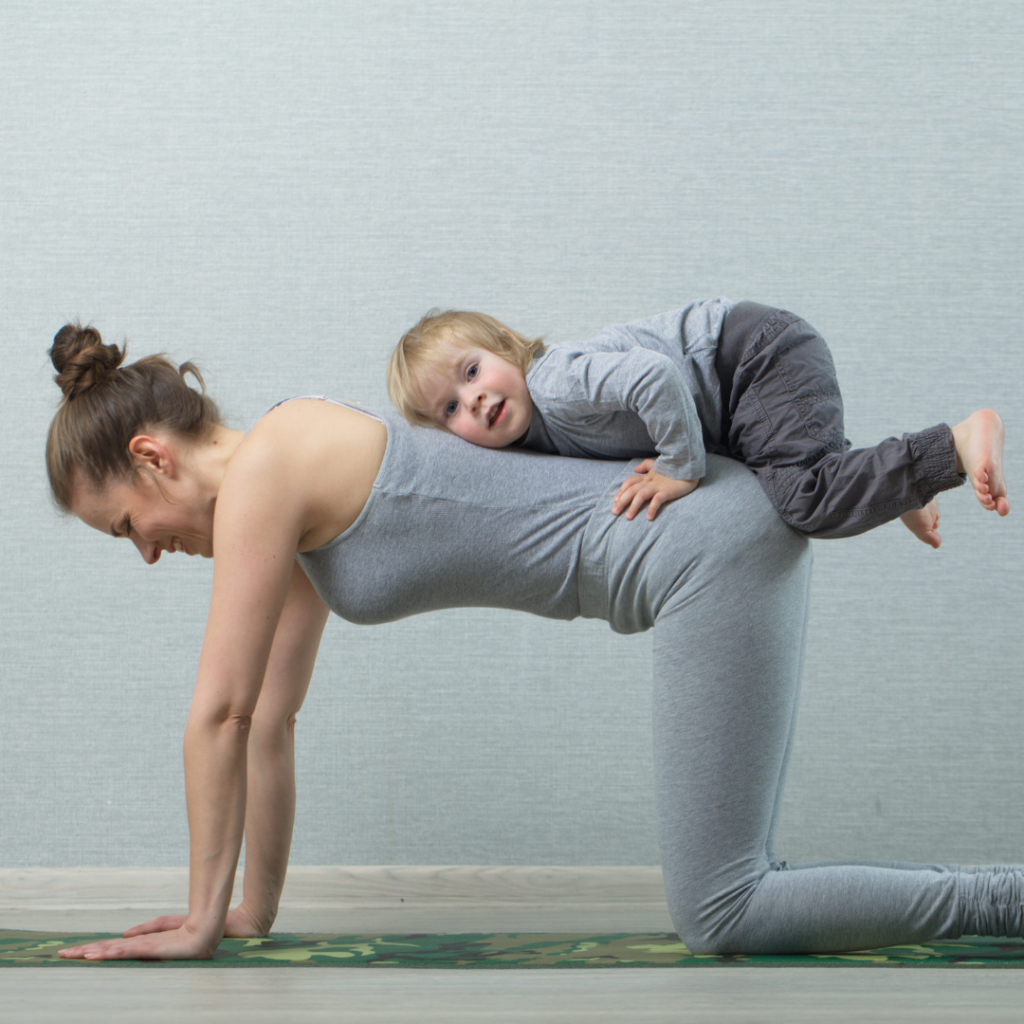I am thrilled to welcome Emma, a fellow yoga teacher, to my blog today! Today, Emma shares her insights on ‘The What, Why, and How of Pelvic Floor Recovery,’ a crucial topic for all mums.
Emma began teaching yoga in 2012 and has dedicated her practice to supporting women through the transformative journey of motherhood since 2016. As a mother of two, she understands the roller coaster ride that motherhood can be. Emma’s passion lies in helping women feel calmer, more connected to their bodies, and empowered in their lives.
Why is the pelvic floor so important?
We’ve all heard the term ‘kegel’ but what are our pelvic floor muscles, why is it so important to practice them, and how exactly do we do them?
Along my journey as a yoga teacher who specializes in prenatal and postnatal recovery, I’ve come across my fair share of women who have pelvic floor dysfunction. Symptoms of pelvic floor dysfunction include urinary incontinence, pain during intercourse, constipation or fecal incontinence, and prolapse. None of these sound very fun, right?! The good news is, there is plenty we can do to both prevent, and remedy these symptoms.
What are pelvic floor muscles anyway?
Your pelvic floor muscles are exactly what they sound like, they are the muscles at the base of your pelvis. There are a group of muscles that surround your rectum, and a group that surround your vagina and urethra. They’re just like any other muscles in your body, and can become weak if they go unused, and with regular exercise, they can become strong. During pregnancy, the weight of the baby puts extra stress on our pelvic floor muscles, which can then lead to pelvic floor dysfunction if we aren’t intentionally strengthening these muscles before, during, and after pregnancy.
So how do I do pelvic floor exercises then?
I like to imagine a zipper starting at the rectum and zipping along the front all the way up to my ribcage. Our pelvic floor muscles are attached to our deepest lower abdominal layer called the transverse abdominals, so if everything is working as it should, when we engage our pelvic floor muscles, our deep core muscles will also engage.
If you’re still not sure if you’re engaging the right muscles. The next time you go to pee, try to stop the flow midstream. Those are your pelvic floor muscles! It’s a lifting in and up feeling.
How often should I practice pelvic floor exercises?
Often! Especially during pregnancy and postpartum. I would suggest doing intentional exercises everyday. It doesn’t have to be long in duration, and you can practice them anywhere anytime, no one will know! Try these different variations:
- Lift your pelvic floor muscles as you exhale, relax as you inhale. As mentioned our pelvic floor muscles are attached to our core muscles. And we often find it easier to contract our abdominals as we exhale, especially if there is an imbalance of pressure and we are spilling out the front of our abdominals, like during pregnancy or with abdominal separation postpartum. Practice 8-10 rounds of contracting on the exhale and relaxing on the inhale. You can do this simply sitting, or you can incorporate movement with the exercise, like cat cows, or bear plank lifts.
- Do quick and strong contractions. This will fire up your fast twitch muscles, which are so important during times when you sneeze, cough, or need to run across the room to grab your toddler! Practice them with a Kapahlbati breath, which is a breathing technique in yoga where you do short forceful exhales very quickly (about 1 per second) and let the inhale happen naturally. Each time you do the fast strong exhale, also contract you pelvic floor muscles! Start with 1-2 rounds of 20-30 exhales, and build up!
- Use controlled contract and relax. Imagine walking up and down a 3 step staircase, and with each step up, lift your pelvic floor a little more. When you get to the top of the staircase, relax your pelvic floor muscles incrementally with each step down. This is great for increasing stamina and control of your pelvic floor muscles. Again, you can practice this one simply sitting, or you can incorporate it into your movement routine. One of my favorites is to add it to a lunge or a goddess pose.
- Lift and hold, and then relax. Contract your pelvic floor muscles and hold for a 10 count. Then completely relax them for a 10 count. Repeat 3-5 times. This is another great one for increasing stamina, and it’s also a great one for insuring that you can also relax your pelvic floor muscles completely. It’s actually just as important to be able to relax your pelvic floor muscles as it is to contract them. If you are living in a state of hypertension this can also cause pelvic floor dysfunction symptoms, and will make it more difficult to condition your pelvic floor muscles properly.
So now that you know what your pelvic floor muscles are, why it’s important to keep them strong, and how to do so, you’ve got no excuses! Go ahead and start practicing!
If you still want some extra support, check out my 5 day free postnatal yoga course where I will guide you through how to do some of the pelvic floor exercises above, and so much more!
Sending love,
Emma



